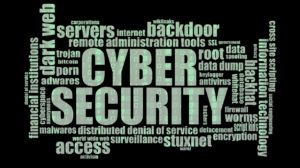As the crypto community is gearing up for an upcoming Blockchain Convention in Europe, one of the buzz words that will be the center of the conference is Asset Tokenization. That is the process of representing the rights of a real-world asset with a digital token on a blockchain. While the concept has been around for a while, it has gained rapid momentum in recent times, further driving the attention of investors.
Asset Tokenization
By tokenization of an asset, we mean a physical or tangible possession that holds value in the real-world. The physical assets are represented by equivalent digital tokens raised on blockchain technology.
Supposedly, let’s say that you want to invest in a property that is worth $25,000. However, at present, all you can put in is $10,000. Tokenization allows you to divide the property into parts. So, a property worth $25,000 is divided into 1000 tokens, each worth 25$. Now, with $10,000 you can invest in the same property by buying 400 tokens of it.
The example that we presented here is a tiny possibility of the vast valley of assets tokenization. These assets can be equities or bonds, company shares, tangible assets like real estate, even gold, diamonds, oil, or fine art. The key benefits of tokenizing an asset are higher liquidity, broader audience, wider alternatives for investors, and new industry applications like fractional ownership.
Moreover, tokenization on a blockchain platform gives an edge to our future business models. It facilitates the trading of real-world securities as simple as transacting (buying or selling) a product online. This process of asset tokenization is set to revolutionize the way in which we operate our businesses, by increasing the speed of transactions and lowering its costs.
Assets Tokenization Platforms: It’s Getting Real
In 2019, assets tokenization worked like a ‘score-point’ for blockchain technology. Its applications and benefits have not gone unnoticed. Additionally, after the failure of the ICO model, security tokens and asset tokenization seem to be the much-needed relief for investors.
The increase in interest has further given rise to a number of platforms, each catering to different use-cases and industries.
Financial Instruments
Tokenization can change the entire landscape in a financial ecosystem right from venture funding investments to payments.
The concept allows financial assets to be converted into digital tokens, which can be further traded instantly with low costs. Moreover, it reduces the need to store vulnerable information like credit card numbers on a centralized system. In total, this also increases liquidity into the market and mitigates the risks of data breaches.
The startups building solutions on tokenizing financial instruments include Jibrel Network and Bankex.
Venture Capital Funding
Another sector that tokenization facilitates is venture funding. Typically, a VC funding project requires large capital and investors need to wait for 5 to 10 years to get a substantial return. Tokenizing a startup’s assets allows its portfolio to be split into pieces and further widens the pool of investors.
Some of the platforms currently working to develop tokenized solutions include Blockchain Capital and Spice VC.
Real Estate
One of the industries that stands to gain maximum benefits from tokenization is real-estate.
It simplifies the entire process of real estate by allowing the buyer and seller to directly interact with each other thereby removing the multiple intermediaries. Additionally, real estate investors can own a fraction of properties, hence lowering the barrier of entry by reducing the capital needed. Further, it also allows a broader audience to earn the appreciative income from shares of a real estate property.
The platform reduces costs and increases market participation which further drives more liquidity to flow into the markets.
Fine Art
To a person of interest, owning art is a luxury and with our current methods, not everyone is allowed to have a piece.
Tokenization of art allows an interested buyer to own a piece of the art by owning the subsequent shares in the form of tokens. Moreover, it removes the need for auction houses, that presently charge hefty fees for connecting the buyer and seller. Blockchain also induces transparency into the platform benefitting the inventor of the art.
The platforms that are presently engaged in tokenizing fine art are Maecenas and Fresco.
Commodities
Currently, the conventional commodities market has a number of problems, including lack of trust, high costs, and complex transactions involving multiple parties.
Blockchain can keep track of complex transactions on a transparent ledger. It can digitize information and standardize processes that further reduce the time consumed, eliminates fraud and mistakes, and lowers the need for intermediaries.
At present, the companies involved with tokenizing commodities on the blockchain platform include Binkabi.
Conclusion
The current investment trends and interests show that the emergence of a token economy is imminent. Moreover, it will bring with it a new set of services, new platforms, and providers. Our current markets and industries will need to adopt the rules of tokenization to thrive and innovate





